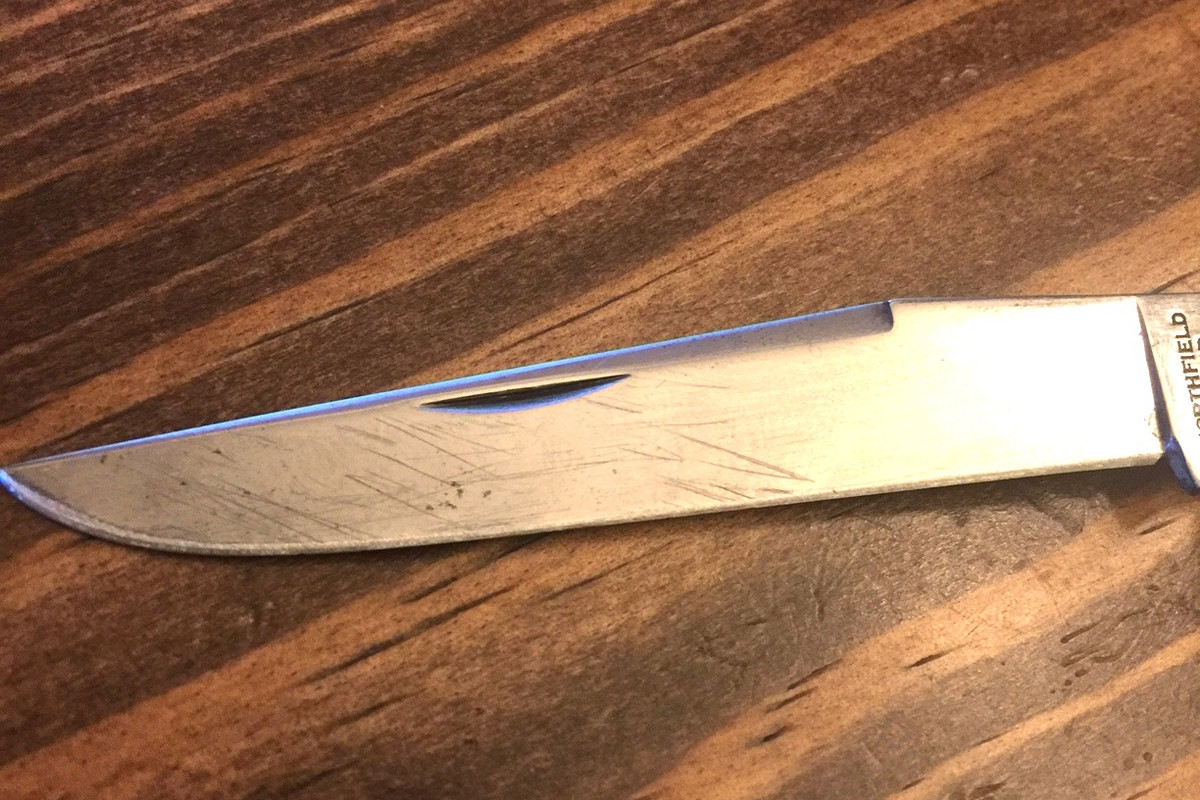abbydaddy
Gold Member
- Joined
- Oct 14, 2014
- Messages
- 3,265
I really don't like carbon steels. My main practical use for my traditional folders is cutting fruit for my kids, and I really dislike the flavor/smell that carbon steel imparts (lots of people really don't perceive the smell/taste, so YMMV. Also, apparently patina reduces the strength of the reaction). I also don't like the look of patina. There really is nothing that I like more about carbon steel than stainless.
The only reason that I own any carbon steel blades is because of the annual forum knives and the fact that GEC doesn't like using steels that I like. Other than forum knives, my only carbon blades are a KABar, a Mora, and my GEC Whaler. The Mora is a knife I use for wood working. The GEC Whaler I have because, frankly, no one makes a better whaler than GEC (it is a stunning piece of cutler's art) and GEC won't make one in stainless. If GEC made a stainless whaler I would hop on it right away.
The only reason that I own any carbon steel blades is because of the annual forum knives and the fact that GEC doesn't like using steels that I like. Other than forum knives, my only carbon blades are a KABar, a Mora, and my GEC Whaler. The Mora is a knife I use for wood working. The GEC Whaler I have because, frankly, no one makes a better whaler than GEC (it is a stunning piece of cutler's art) and GEC won't make one in stainless. If GEC made a stainless whaler I would hop on it right away.




